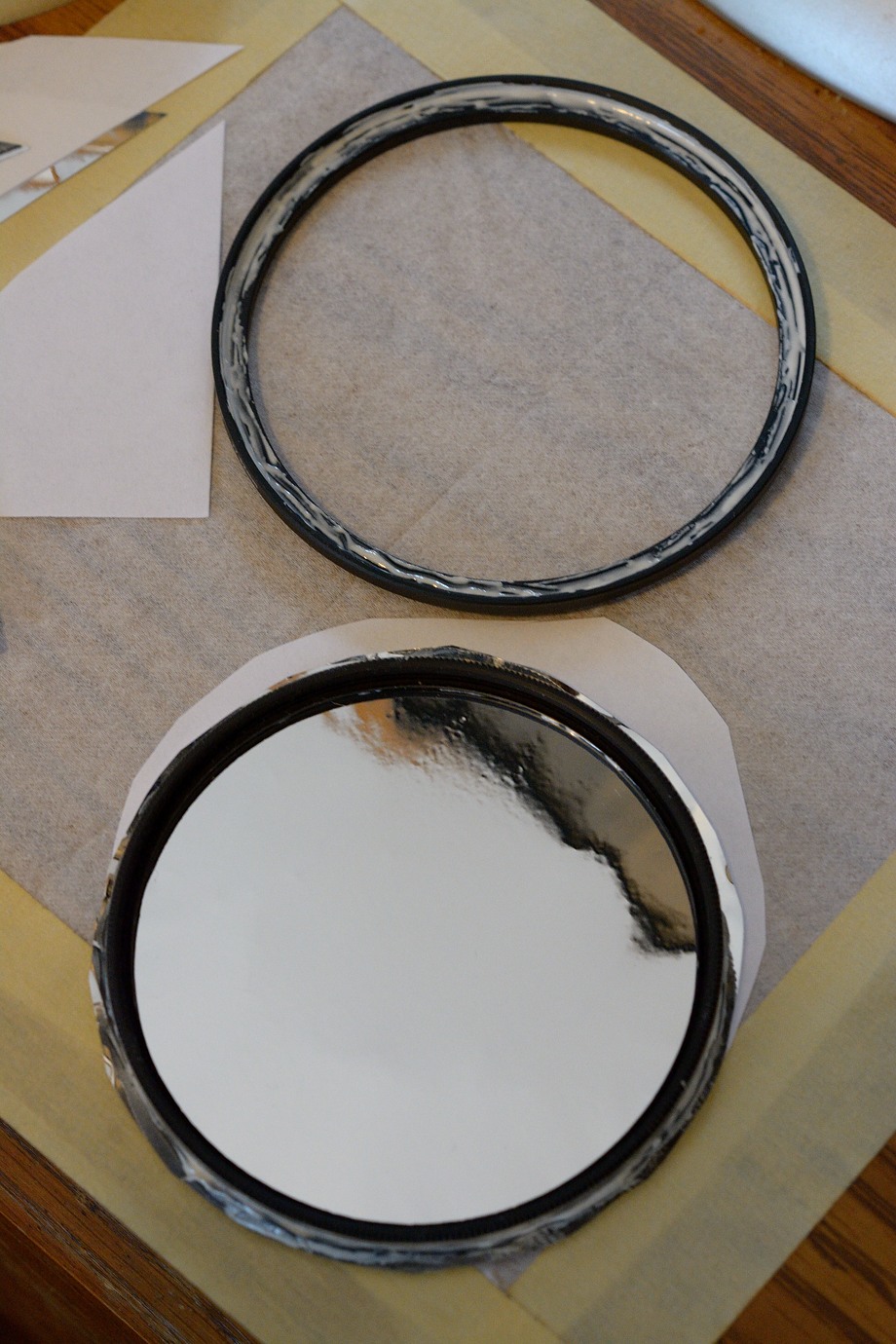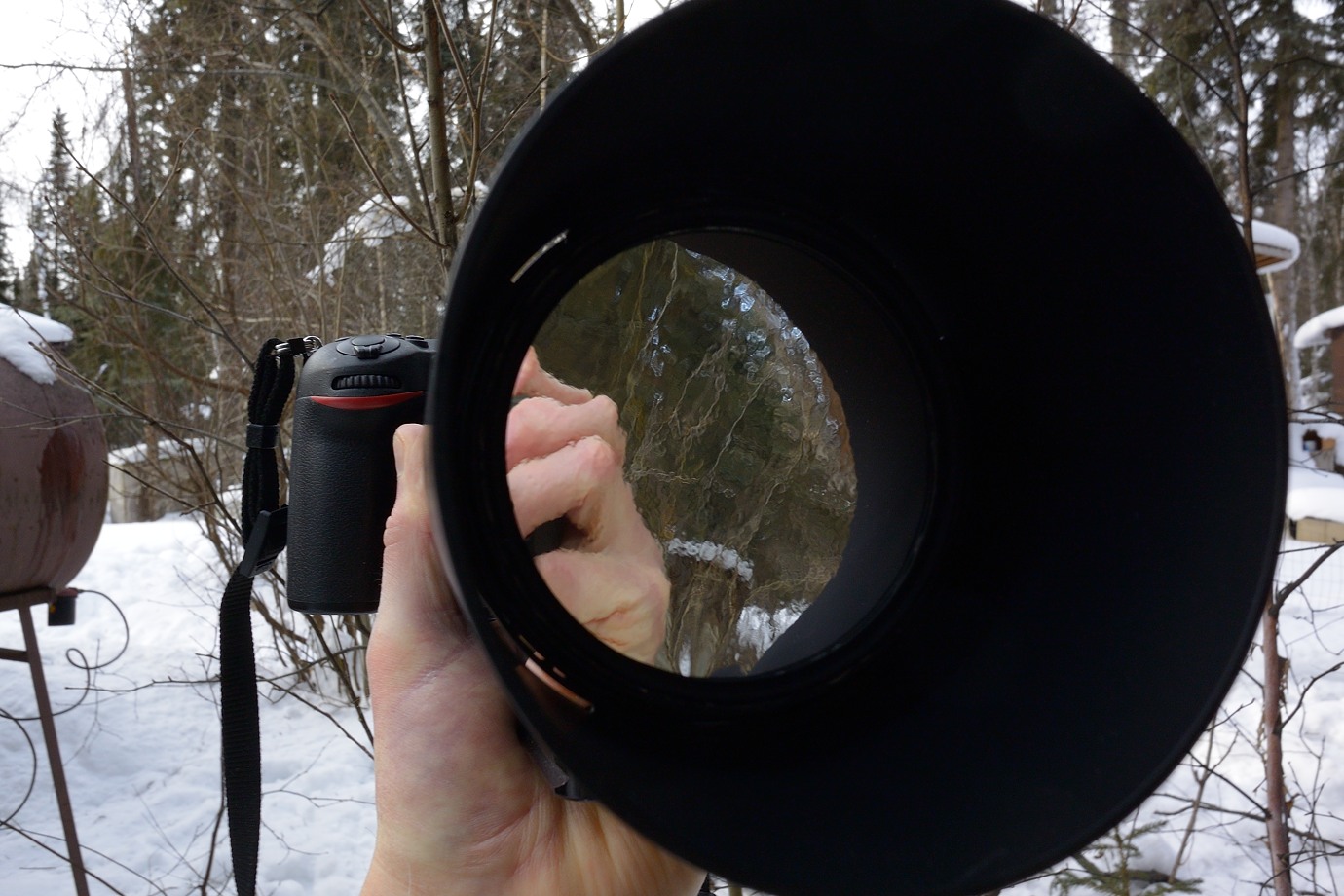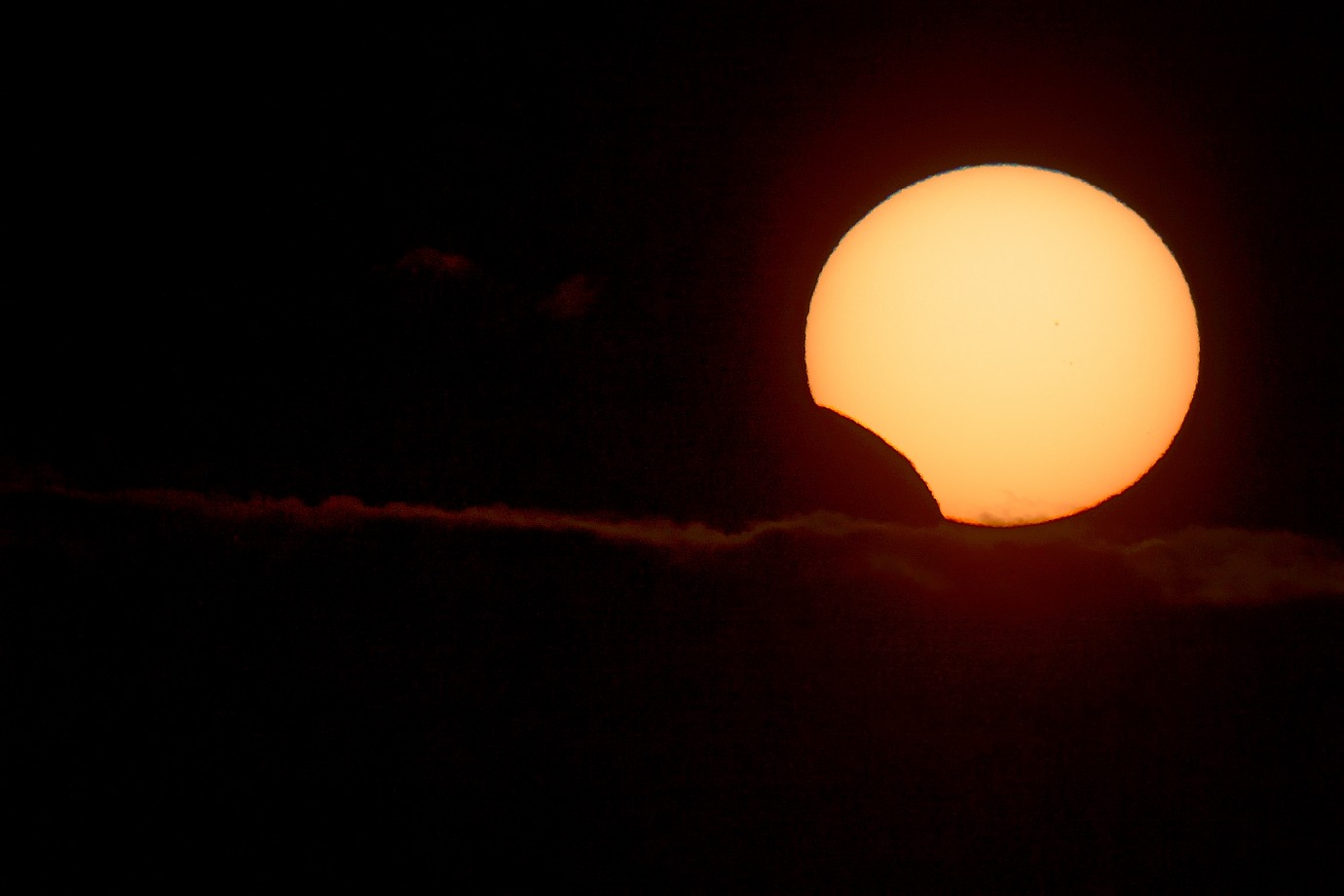This is a little heads-up that planet Mercury will pass in front of the Sun May 9. It will be be visible though its full phase in Western and Northern Europe plus Eastern parts of the American continent, and through its last phase in Western parts of the American continent including Alaska. While not as spectacular and rare as the passage of Venus in front of the Sun, it should be well worth capturing. It also looks like timing coincides with the Scotland event, so there might be another task for the gathering. What I experienced before the Venus passage was that solar filters were sold out everywhere (a colleague saved me by sharing his filter with me), so if you need to get one, hurry!
Earlier this spring I made myself a solar filter based on the Baader Astrosolar film, visual ND 5, which is safe for direct observations. I considered ND 3.8 which is listed for photographic purposes, but after looking up tables for exposure, I decided that exposures would be on the short side unless combined with other filters. Also, ND 3.8 is much harder to come by in smaller sizes; the 4x4" piece of ND 5 only cost me $15 shipped from Agena Astroproducts.
The standard recipe for making a solar filter is based on sandwiching the film between two poster boards using sticky tape. I have seen reports from some who simply have pressed the film between a couple of filters/stepup rings for a more compact solution, however that violates the recommendations to mount the film without any stretch of the film. Here is what I did to avoid that:
I had an old 77mm filter ring from an NC filter that broke. To reduce thickness (to fit in a standard Nikon filter case) i filed down the male threads to get a flat surface (a cheap 72-77 mm stepup ring could be used instead of this). Now I applied the principle most recommended: A piece of Kim-wipe was taped down to be completely flat, the Baader film placed loosely on top of that, Locktite marine epoxy was applied to the flat surface of the filter ring, and now comes the "tricky" part: Center the filter ring at low height above the film, and drop it straight down onto the Baader film. From now on do not touch it until the epoxy is completely set overnight; it is best to do this before turning in to avoid the temptation to adjust anything...

Next day I trimmed the film to leave a small edge of a few of mm, then applied a small amount of epoxy to the inside of a cheap 77-82 mm step-up ring and pressed the filter ring with the film into it. As the film already is firmly attached to the filter ring there is no risk of getting it stretched. I applied a moderate weight on top of the filter ring until the epoxy had set.

Now I have a solar filter that fits nicely in a standard Nikon filter case and can be carried everywhere without need for carrying a larger filter in a "pizza box". (I had to trim down the ridge inside the case a little to get to the right thickness when resting in the case.)

Here the filter is safely mounted on my 300mm PF, well protected by the shade. The only disadvantage of this approach is that if used during a total solar eclipse it will be a bit slower to mount/dismount during the dark phase than one fitted on the front of the shade, but there is no need to screw it in too tightly.

To the testing - the Baader film gives a pretty neutral color opposed to the typical glass filters on the market. Here is the huge sunspot from last week which completely dwarfs Mercury and some other planets, in size.

From the solar eclipse earlier this spring, here natural sunset colors are showing with daylight white balance.

From two of the remaining corners I made a pair of solar filters for my 8x20 Zeiss binoculars using the same principle.

Some links:
http://eclipsewise.com/oh/tm2016.htmlhttps://en.wikipedia.org/wiki/Transit_of_Mercuryhttp://eclipse.gsfc.nasa.gov/transit/catalog/MercuryCatalog.htmlAn additional note: I had applied some double sided tape to the outside of the filter ring to attach the edge of the film to the filter ring before gluing it to the step-up ring, but this did not work very well and is best omitted unless one can find a better double sided tape than I had available.